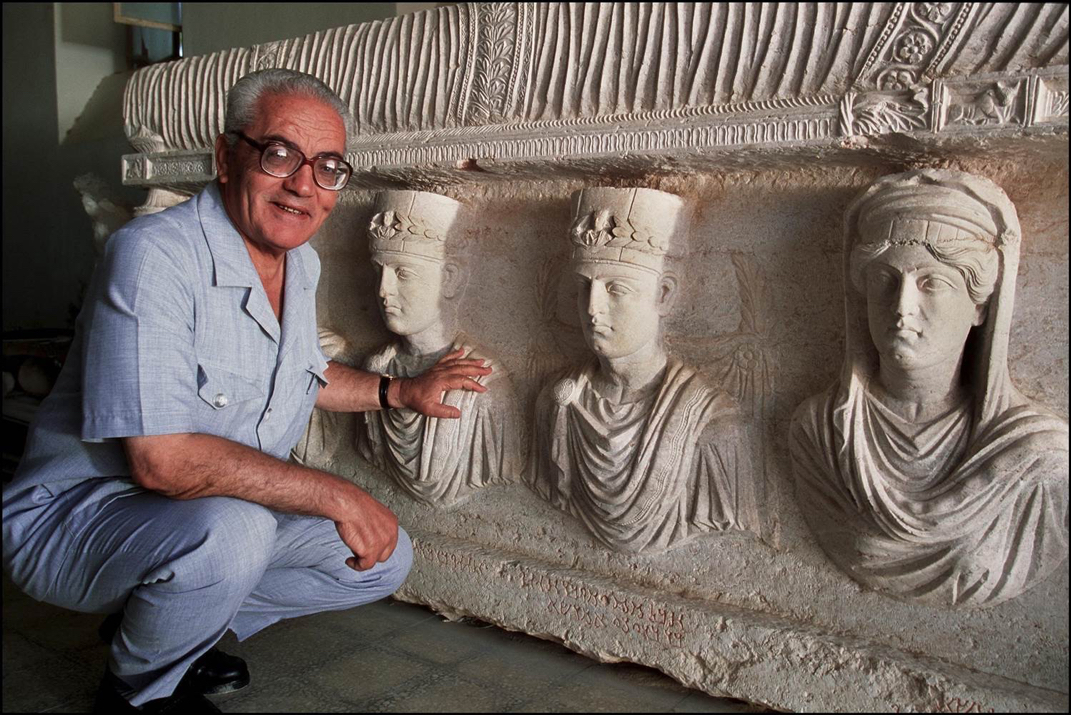|
Doctors take an oath for their patients. Archaeologists don't take an oath. But for the most part, they paradoxically spend a great deal of their lives protecting the sites that they excavate. They diligently research and document what they find (and what they think is missing) to help sustain a hypothesis that requires more fact than imagination. These interpretations eventually enrichen our collective understanding of the past as we make our way into the future. When I was at university there were certain types of archaeologists that had the Archaeology faculty seeing red. Archaeologists that were frowned upon and who were only begrudgingly acknowledged with a raised eyebrow. Zahi Hawaas, the boss man of Egyptian archaeology was one of these guys. I remember one of my old lecturers used to refer to him as being a bit of a circus ringleader- all showmanship, not big on the research, and above all someone who didn't seem to want to do anything off camera. Khaled Al Asaad was not one of those kinds of people, even if he had a media profile. He spent a lifetime researching Palmyra, the ancient Roman site in modern day Syria, which alongside other sites such as Leptis Magna (Libya) and Petra (Jordan) ranks as one of the most picturesque of the classical antiquity sites that still stand today. Al Asaad was 82, and after a lifetime of service to Palmyra and the department of antiquities, spent the last month of his life in IS captivity. Reports suggest that IS militants were attempting to force him to reveal the location of safeguarded Palmyra artifacts. In addition to their well documented destruction of antiquities, IS are known to be heavily invved in the looting and black market selling of artifacts. Al Asaad was killed in a square in recent days, not far from the Palmyra site which he oversaw until his retirement from the site in 2002. The same site where his decapitated body was then taken and hanged, his head strewn beneath it. An IS fashioned sign implicating him as being an apostate who cohorted with the Syrian regime and who traded in idols and dealt with idolators was placed beneath his body. Documented, not for the enrichment of our collective knowledge, but as a menacing threat which would attract the attention of the world's press. Another IS scalp: another leading light that has been spent. This is another fleeting instance in which the sword seems mightier than the pen. But Al Asaad's lifelong work has burned Palmyra into the global consciousness. It could've been a dusty site in an area that few would've headed to- but instead, his deliberate and lifelong research has elevated its standing, returning it to the majesty it once had within a zone of incredible historical importance to us all. And despite the gave danger that he, as an 82 year old man faced, Al Asaad protected Palmyra until his final days. May he and the others who have senselessly died before him at the hands of these real apostates, these real idolators, rest in peace, and may his loved ones eventually find some solace in the fact that though his death was senseless and at the hands of the ignorant, that it is he, who through his lifelong determination to preserve rather than destroy, that will be remembered, and not those who killed him when this chapter of our history is eventually written. Vale.
0 Comments
Your comment will be posted after it is approved.
Leave a Reply. |
Dave
|
|
|
Dave Di Vito is a writer, teacher and former curator.He's also the author of the Vinyl Tiger series and Replace The Sky.
For information about upcoming writing projects subscribe to the mailing list. Dave hates SPAM so he won't trouble you with any of his own. He promises. |






 RSS Feed
RSS Feed